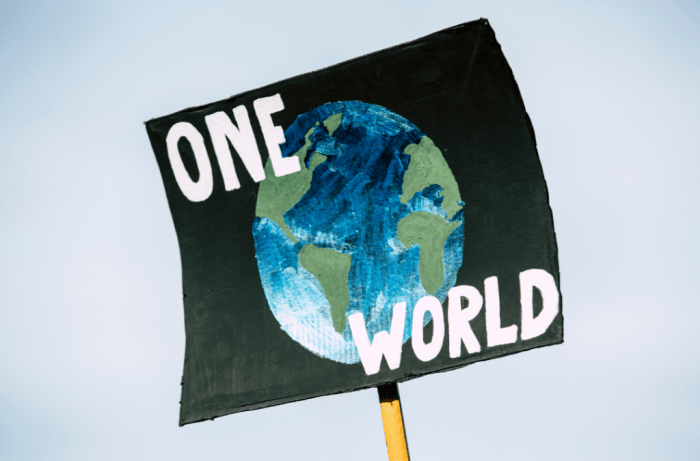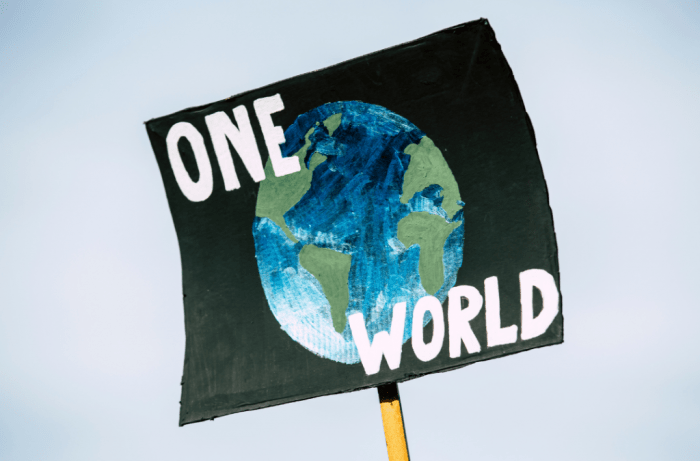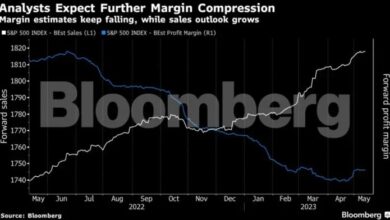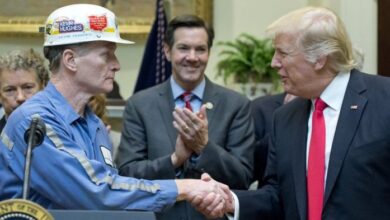
Talking about climate change is more than just discussing facts and figures; it’s about understanding the complex interplay of public perception, historical context, and diverse perspectives on solutions. This exploration delves into the evolving discourse surrounding climate change, examining how media shapes public opinion, and the critical role of global cooperation and individual action in addressing this urgent challenge.
We’ll examine the various viewpoints on tackling climate change, from government policies to corporate involvement and individual contributions. We’ll also analyze how different communities are affected and explore successful initiatives that have demonstrated positive impacts.
Public Perception of Climate Change
Public perception of climate change is a complex and multifaceted issue, shaped by a range of factors, including demographics, media portrayals, personal experiences, and emotional responses. Understanding these influences is crucial for effective communication and engagement on this critical global challenge. Misconceptions and misunderstandings about the science and impacts of climate change often hinder meaningful action.A nuanced understanding of public perception allows for tailored communication strategies that resonate with different groups, fostering a more informed and engaged public.
This understanding is vital for creating impactful policies and initiatives to address the climate crisis effectively.
Public Understanding Across Demographics
Different demographic groups hold varying levels of understanding and concern regarding climate change. For instance, younger generations often exhibit higher levels of concern and engagement, possibly due to their perceived vulnerability to the long-term consequences of climate change. Conversely, older generations may have differing levels of awareness and acceptance based on their life experiences and exposure to information.
Educational attainment and socioeconomic status can also play a role in shaping individual perceptions. For example, those with higher levels of education may possess a more comprehensive understanding of the scientific evidence.
Common Misconceptions and Misunderstandings
Misconceptions about climate change often stem from a lack of scientific literacy or selective exposure to information. Some common misunderstandings include skepticism about the scientific consensus on human-caused climate change, doubts about the severity of its impacts, or the belief that technological solutions will fully mitigate the problem. Furthermore, some individuals may perceive climate change as a distant or abstract threat, failing to connect it to their immediate daily lives.
Impact of Media Portrayals
Media portrayal significantly influences public perception. Sensationalized or politicized coverage can either heighten public concern or foster skepticism. Inaccurate or incomplete scientific information, often presented in a simplistic or dramatic manner, can lead to misunderstanding. Similarly, the frequency and prominence of climate change coverage can influence public attention, potentially leading to fatigue or apathy. For example, inconsistent or contradictory reporting in the media can confuse and disengage the public.
Role of Personal Experiences
Personal experiences, whether direct or indirect, significantly shape public opinion. For example, individuals who have witnessed the effects of extreme weather events, such as floods or droughts, may be more likely to acknowledge the reality of climate change. Conversely, those who have not personally experienced such events may be less inclined to accept the urgency of the issue.
Factors Influencing Public Engagement
Several factors influence public engagement with climate change discussions. These include access to reliable information, the perceived urgency of the issue, and the availability of practical solutions. Furthermore, trust in institutions and individuals who communicate about climate change plays a crucial role. For example, the level of trust in government agencies or scientific experts can impact how individuals respond to climate change information.
Emotional Responses
Discussions about climate change often evoke a range of emotional responses, including anxiety, fear, hope, and despair. Understanding these emotional dimensions is crucial for fostering effective communication and engagement. For instance, acknowledging and addressing the anxieties surrounding climate change can encourage a more proactive and hopeful approach.
Historical Context of Climate Change Discourse: Talking About Climate Change
The narrative surrounding climate change has evolved significantly over the decades, reflecting shifts in scientific understanding, public awareness, and political action. Initially framed as a relatively niche scientific concern, it has become a global crisis demanding urgent attention. This evolution is crucial to understanding the current state of public discourse and the challenges ahead.The historical journey of climate change discourse reveals a complex interplay between scientific discoveries, public perception, and political responses.
Analyzing this history provides valuable insights into the factors that have shaped the current urgency and the challenges in fostering effective action.
Evolution of Public Discourse
The public discourse on climate change has undergone a remarkable transformation. Initially, the focus was largely on the scientific understanding of atmospheric processes, often lacking the urgency and broader societal implications now associated with it. The language used reflected this difference, often employing more technical terminology and less accessible framing.
Language Used to Describe Climate Change
The language used to describe climate change has changed dramatically over time. In earlier periods, the language was often more technical and focused on scientific observations. As the understanding of the implications grew, the language became more accessible and focused on the impacts on society, economy, and the environment.
Key Events and Milestones
Several key events and milestones have significantly shaped the narrative around climate change. These events, from scientific breakthroughs to public awareness campaigns, have dramatically influenced public understanding and policy responses.
- The publication of the first IPCC reports (1990s) marked a turning point in the discourse. These reports, synthesizing the work of numerous climate scientists, presented a compelling case for the human role in climate change and its potential consequences. The reports were crucial in moving the issue from a scientific niche to a broader societal concern.
- The 1997 Kyoto Protocol represented a significant step in international efforts to mitigate climate change. It established legally binding emission reduction targets for industrialized nations. This marked a crucial turning point in recognizing the need for international cooperation to address this global challenge.
- The 2009 Copenhagen Climate Summit highlighted the challenges of reaching global consensus on climate action. While not achieving a comprehensive agreement, it showcased the growing urgency and political will for international cooperation. The summit demonstrated the complexity of international negotiations and the diverse perspectives on the issue.
- The 2015 Paris Agreement presented a landmark achievement in global climate negotiations. It established a framework for limiting global warming to well below 2 degrees Celsius, aiming for 1.5 degrees, and promoting the transition to a low-carbon economy. The Paris Agreement signaled a significant shift toward global cooperation and commitment to addressing climate change.
Influence of Scientific Discoveries
Scientific discoveries have played a pivotal role in shaping public understanding of climate change. New data and research findings have provided a more detailed picture of the problem, strengthening the case for action.
- The accumulation of data on rising global temperatures, melting glaciers, and changing weather patterns provided irrefutable evidence of climate change’s impact. This data became increasingly important in framing the issue for public audiences and influencing policy decisions.
- Improved models and simulations of the Earth’s climate system enabled scientists to project future climate scenarios with greater accuracy. These projections, demonstrating the potential severity of climate change impacts, were crucial in raising public awareness and prompting calls for action.
- Studies linking extreme weather events to climate change, such as more frequent and intense heatwaves and hurricanes, have provided compelling evidence of the real-world consequences of climate change. These studies helped to personalize the issue for the public and highlight the immediate and tangible risks.
Timeline of Significant Moments
| Year | Event | Impact |
|---|---|---|
| 1896 | Svante Arrhenius’s calculations on the greenhouse effect | Early scientific understanding of human impact on climate. |
| 1988 | Formation of the IPCC | Increased scientific consensus on climate change. |
| 1997 | Kyoto Protocol | First international agreement to limit greenhouse gas emissions. |
| 2009 | Copenhagen Climate Summit | Showcased challenges in achieving global consensus. |
| 2015 | Paris Agreement | Landmark global agreement to limit global warming. |
Different Perspectives on Climate Change Solutions
The fight against climate change necessitates a multifaceted approach, demanding collaboration across various sectors. Different perspectives on the solutions needed to address this global challenge are shaped by economic priorities, political ideologies, and individual values. Understanding these differing viewpoints is crucial for developing effective strategies and fostering a unified global response.Tackling climate change requires acknowledging the diverse range of opinions and interests involved.
The solutions proposed often vary significantly, reflecting differing priorities and values. A crucial step is to examine the potential benefits and drawbacks of each proposed solution, considering their impact on various stakeholders and the environment.
Government Policies in Addressing Climate Change
Government policies play a pivotal role in directing climate action. These policies influence both corporate behavior and individual choices. Effective policies typically involve setting emission targets, incentivizing renewable energy, and regulating industries that contribute significantly to greenhouse gas emissions. International cooperation is also vital in coordinating global efforts.
- Carbon pricing mechanisms, such as carbon taxes or cap-and-trade systems, aim to internalize the cost of carbon emissions, encouraging businesses and individuals to reduce their environmental impact. For example, the European Union Emissions Trading System (EU ETS) has been instrumental in reducing emissions in the bloc.
- Regulations on industrial emissions, along with stricter building codes and vehicle standards, can significantly curtail pollution from various sources. The implementation of stricter emission standards for vehicles has demonstrably improved air quality in numerous cities.
- Financial incentives for renewable energy development, such as tax credits or subsidies, stimulate investments in clean technologies. Countries like Germany and Spain have used substantial government support to bolster their renewable energy sectors.
Corporate Involvement in Climate Change Solutions
Corporations, as significant contributors to greenhouse gas emissions, bear a substantial responsibility in addressing climate change. Their commitment to sustainable practices is vital for achieving global emissions reductions targets.
- Transitioning to renewable energy sources and adopting energy-efficient technologies within corporate operations are crucial steps. Companies like Google and Apple have made significant investments in renewable energy.
- Adopting sustainable supply chains and promoting responsible sourcing practices are crucial for minimizing environmental damage throughout their operations. Companies in the fashion industry are increasingly focusing on sustainable materials and ethical production.
- Investing in research and development of innovative climate-friendly technologies is vital for the long-term fight against climate change. Companies like Tesla and BYD have been at the forefront of electric vehicle development.
Individual Contributions to Climate Change Solutions
Individual actions can significantly impact the fight against climate change. Sustainable choices, both large and small, can collectively create a positive impact.
- Reducing energy consumption at home through energy-efficient appliances and practices can contribute substantially to reducing carbon emissions. Simple actions like switching to LED lights and unplugging electronics when not in use can make a difference.
- Adopting sustainable transportation choices, such as cycling, walking, or using public transport, can significantly reduce personal carbon footprints. Promoting cycling infrastructure in cities can encourage more people to adopt sustainable transport.
- Making conscious consumption choices, such as purchasing products with minimal packaging or supporting sustainable businesses, can reduce the environmental impact of consumerism. Supporting companies with strong environmental policies sends a clear market signal.
Strategies for Adapting to Climate Change
Adapting to the unavoidable impacts of climate change is equally important as mitigating its effects. This involves developing strategies to manage the changing climate conditions.
- Developing resilient infrastructure, including flood defenses, drought-resistant crops, and improved water management systems, is crucial for adapting to extreme weather events. Investments in flood defenses in coastal areas are vital to protect communities from rising sea levels.
- Promoting sustainable agriculture practices and developing drought-resistant crops can ensure food security in the face of changing weather patterns. Developing drought-resistant crops and improving irrigation techniques can help maintain food production in arid regions.
- Strengthening early warning systems for extreme weather events and improving disaster preparedness plans can help minimize the impact of climate-related disasters. Investing in early warning systems for hurricanes and floods can save lives and property.
The Role of Media in Climate Change Discussions

The media plays a crucial role in shaping public perception and understanding of climate change. It acts as a conduit for information, influencing how the public perceives the severity, urgency, and potential solutions related to this complex issue. From news reports and documentaries to social media posts and online articles, the media’s influence is pervasive and significant.Media outlets, whether print, broadcast, or online, present information about climate change in various ways.
This presentation, in turn, shapes public discourse and ultimately impacts individual and collective action. Different media outlets, with their unique editorial stances and target audiences, present varying narratives, highlighting particular aspects of the issue while potentially downplaying others.
Media Presentation of Climate Change Information
Different media outlets employ various strategies to present information about climate change. News outlets often focus on specific events, like extreme weather events, to illustrate the impacts of climate change. Documentaries and science-based articles delve deeper into the scientific evidence, providing context and potentially highlighting the interconnectedness of climate change with other global issues. Social media platforms, with their quick dissemination of information, often relay news and opinions, fostering discussions and creating a sense of urgency.
Examples of Media Framing
News outlets often frame climate change stories through the lens of immediate impacts. For instance, a report on rising sea levels might focus on coastal communities facing displacement, while a report on extreme heat might concentrate on the health risks faced by vulnerable populations. Conversely, some outlets might emphasize the economic implications of climate change policies, potentially downplaying the environmental urgency.
Online articles and blogs might focus on specific solutions, like renewable energy initiatives, promoting individual actions.
Potential Biases in Media Coverage
Media coverage of climate change is not always objective. Financial interests, political agendas, and even the personal biases of journalists can influence the way stories are presented. For example, an outlet heavily funded by fossil fuel companies might downplay the urgency of climate action. Alternatively, an outlet with a strong environmental focus might frame the issue in a way that oversimplifies the complexities of solutions or paints a picture of pessimism.
Impact of Social Media on Climate Change Conversations
Social media platforms have become crucial spaces for climate change conversations. These platforms allow for rapid dissemination of information, fostering discussions and raising awareness. However, social media also presents challenges. Misinformation and biased narratives can spread quickly, potentially hindering effective communication and generating polarization. The rapid dissemination of information can be a double-edged sword.
Comparative Analysis of Media Outlets
| Media Outlet | Approach to Climate Change | Focus | Potential Biases |
|---|---|---|---|
| News Channel A | Focuses on immediate impacts, like extreme weather events. | Humanitarian crises and economic consequences. | Potential for underemphasizing the long-term risks and scientific consensus. |
| Magazine B | Provides in-depth analysis of scientific evidence. | Explores scientific mechanisms and long-term trends. | Potential for oversimplification of complex issues or lack of relatable examples. |
| Social Media Platform C | Rapid dissemination of news and opinions. | Public discourse and awareness-raising. | High susceptibility to misinformation and biased narratives. |
Effective Communication of Complex Climate Change Concepts
Media can effectively communicate complex climate change concepts by using relatable examples. For instance, explaining the concept of carbon sequestration can be made more understandable by comparing it to natural processes like tree growth. Visual aids, like infographics and interactive maps, can help convey intricate data in an easily digestible format. Expert interviews can provide context and credibility.
Presenting solutions in a positive and proactive manner can foster hope and inspire action. By framing climate change solutions as opportunities for economic growth and social advancement, media outlets can increase their effectiveness.
Global Cooperation and Climate Change
The fight against climate change transcends national borders. The sheer scale of the problem, from greenhouse gas emissions to rising sea levels, demands a global response. Effective solutions require international cooperation, shared responsibility, and a commitment to collective action. This interconnectedness necessitates understanding the intricacies of global agreements, the hurdles to overcome, and the successful strategies that have emerged.Addressing climate change requires a concerted effort from every nation.
Individual actions, while important, are insufficient. The interconnected nature of the global economy and environment necessitates international collaboration to create and enforce policies that limit emissions and promote sustainable practices. This cooperation ensures that solutions are equitable and effective.
Importance of International Collaboration
International cooperation is crucial for tackling climate change because no single nation can effectively address the global environmental challenges. The interconnected nature of the climate system necessitates coordinated efforts to reduce emissions, adapt to the effects of climate change, and promote sustainable development. Sharing knowledge, resources, and best practices is essential for accelerating progress. Individual national actions, while valuable, are insufficient to achieve the necessary reductions in emissions and the adaptation required.
Examples of Successful International Agreements
Several international agreements have played a vital role in addressing climate change. The United Nations Framework Convention on Climate Change (UNFCCC) established the foundation for global climate negotiations. The Kyoto Protocol, while having limitations, introduced legally binding emission reduction targets for developed countries. The Paris Agreement, a landmark achievement, aims to limit global warming to well below 2 degrees Celsius, preferably to 1.5 degrees Celsius, above pre-industrial levels.
These agreements demonstrate the potential for global cooperation to address complex environmental issues.
Challenges and Obstacles to Global Cooperation
Despite the importance of international cooperation, significant challenges impede progress. Differing national interests, economic disparities, and political considerations often create obstacles. Developing nations, for example, frequently prioritize economic growth, potentially at the expense of immediate emission reduction commitments. Ensuring equitable and fair outcomes for all parties is a major challenge. Finding a balance between economic development and environmental protection remains a significant obstacle.
Moreover, enforcing international agreements and ensuring accountability can be problematic.
Successful Strategies for International Cooperation
Several successful strategies have emerged to foster international cooperation. Building trust and fostering open dialogue are paramount. International conferences, summits, and workshops provide platforms for nations to share experiences and collaborate on solutions. Providing financial and technical support to developing nations is crucial to bridge the gap and promote equitable solutions. Sharing best practices and technologies, particularly in renewable energy and sustainable agriculture, is vital to accelerate progress.
Establishing clear and measurable targets and reporting mechanisms is also essential for ensuring accountability and transparency.
Table: Roles of Different Countries in International Climate Agreements
| Country Category | Role in Climate Agreements |
|---|---|
| Developed Countries | Historically high emitters; typically take on more stringent emission reduction targets; provide financial and technological support to developing countries |
| Developing Countries | Often prioritizing economic development; participate in climate agreements, but often seek support for capacity building and technology transfer |
| Emerging Economies | Rapidly growing economies; frequently face challenges in balancing economic growth with emission reduction targets; increasingly play a crucial role in global climate action |
Benefits of Global Cooperation in Tackling Climate Change
Global cooperation in tackling climate change offers numerous benefits. It leads to more effective and efficient solutions by pooling resources and expertise. Shared responsibility fosters a sense of collective ownership, promoting a more sustained and comprehensive approach. This cooperation allows for the exchange of knowledge and technologies, accelerating the transition to sustainable practices. It promotes economic opportunities in green industries, fostering innovation and job creation globally.
Furthermore, it can strengthen international relations and build trust among nations.
Public Engagement and Participation
Climate change is a global challenge that requires collective action. Moving beyond discussions and into tangible solutions necessitates active engagement from individuals at all levels. Public participation is not just a desirable outcome; it’s a crucial component of effective climate action strategies. From advocating for policy changes to adopting sustainable practices, individuals play a pivotal role in shaping a more sustainable future.Engaging the public in meaningful ways is paramount to building a movement for climate action.
This involves understanding the diverse perspectives and concerns within communities, and tailoring approaches to resonate with different demographics and motivations. Effective communication and accessible information are key to fostering a sense of ownership and responsibility among citizens.
Ways Individuals Can Participate in Climate Change Discussions
Public engagement encompasses various avenues for participation. Individuals can contribute to climate change discussions through diverse channels. Participating in online forums, signing petitions, contacting elected officials, and attending community meetings are examples of direct engagement. Moreover, sharing information on social media platforms, engaging in constructive dialogue with others, and supporting organizations dedicated to climate action are important ways to contribute.
The goal is to amplify voices and build a collective understanding of the issue.
Importance of Community Engagement in Addressing Climate Change
Community engagement is fundamental to successful climate action. Local communities possess a wealth of knowledge and experience that can be leveraged to identify and address specific challenges. By involving residents in decision-making processes, local solutions can be tailored to address unique circumstances, fostering ownership and responsibility. This collaborative approach often leads to more effective and sustainable outcomes.
Role of Education in Fostering Public Engagement with Climate Change, Talking about climate change
Education plays a critical role in empowering individuals to engage with climate change. Effective educational initiatives can foster a deeper understanding of the science behind climate change, the impacts on communities, and the various solutions available. From school curricula to community workshops, accessible and engaging educational resources are crucial for raising awareness and building a well-informed public.
Effective Strategies for Encouraging Public Participation in Climate Change Actions
Several strategies can be employed to motivate public participation in climate change actions. Promoting awareness campaigns that highlight the personal benefits of sustainable choices can encourage positive behavior changes. Encouraging collaboration through peer-to-peer initiatives, where individuals inspire others, can also be highly effective. Additionally, showcasing successful local examples of climate action and providing clear and accessible information about available resources can stimulate participation.
Creating Engaging Content for Social Media Campaigns
Social media platforms provide a powerful tool for engaging the public in climate change discussions. Effective social media campaigns must employ compelling visuals, concise messaging, and interactive elements to capture attention and inspire action. Sharing stories of individuals and communities taking action, highlighting scientific findings in an accessible way, and encouraging discussions can create a sense of community and shared purpose.
For example, showcasing local initiatives, featuring personal stories of environmental activism, or utilizing infographics and videos to explain complex concepts can greatly enhance engagement.
Resources Available for Individuals to Get Involved
Numerous organizations and initiatives provide resources for individuals seeking to get involved in climate action. Local environmental groups, government agencies, and online platforms offer information on climate change solutions and opportunities to participate. Websites and social media pages dedicated to climate activism provide accessible resources and a space for connecting with others.
- Local environmental groups: These organizations often host events, workshops, and advocacy campaigns, offering opportunities to engage directly in local initiatives.
- Government websites: Many governments have dedicated websites with information on climate change policies, resources, and opportunities for citizen participation.
- Online platforms: Websites and social media groups dedicated to climate action provide information, resources, and a platform for connecting with like-minded individuals.
Examples of Successful Climate Change Initiatives
From ambitious global agreements to grassroots community projects, numerous examples showcase the potential for effective climate action. Understanding these successes can illuminate pathways to more sustainable futures and inspire further progress. This exploration dives into various successful initiatives, highlighting their impact and the factors that contributed to their effectiveness.
Community-Led Climate Change Projects
Community-led initiatives often prove highly effective because they are deeply rooted in local needs and priorities. These projects foster a sense of ownership and responsibility, leading to long-term sustainability.
- Community Solar Farms: Local groups often collaborate to establish community solar farms, providing clean energy access to residents. These projects not only reduce reliance on fossil fuels but also offer financial benefits to participating communities. A prime example is the successful solar farm established in the town of Oakville, where community members collectively raised funds and installed solar panels, resulting in a substantial decrease in electricity costs for households and reduced carbon emissions for the area.
- Urban Green Spaces: Initiatives focused on expanding green spaces in urban environments often yield multiple benefits. They improve air quality, provide cooling shade in hot weather, and enhance biodiversity. For example, the “Green Streets” initiative in the city of Portland, Oregon, saw significant increases in green spaces, reducing the urban heat island effect and improving the quality of life for residents.
- Sustainable Agriculture Practices: Farmers’ cooperatives and community gardens often adopt sustainable farming practices, minimizing environmental impact. These include reducing water usage, composting, and promoting biodiversity. A successful example is the “Sustainable Farming Collective” in the rural area of Wisconsin, where members learned to manage their resources efficiently and reduced their overall carbon footprint through improved farming techniques.
Government Policies Related to Climate Change
Government policies play a crucial role in driving large-scale change. Well-designed policies create frameworks for incentivizing sustainable practices and regulating harmful emissions.
- Carbon Pricing Mechanisms: Carbon taxes and cap-and-trade systems are often employed to make polluting activities more expensive. For instance, the carbon tax implemented in British Columbia has been credited with reducing greenhouse gas emissions and fostering the development of renewable energy sources. These policies create economic incentives for businesses and individuals to reduce their carbon footprint.
- Renewable Energy Standards: Mandates requiring a certain percentage of electricity generation from renewable sources encourage investment in clean energy technologies. California’s renewable energy portfolio standards are a prominent example, leading to significant growth in solar and wind energy. This policy demonstrates how government regulations can drive the development and adoption of cleaner energy sources.
- Energy Efficiency Standards: Regulations requiring energy efficiency in buildings and appliances can substantially reduce energy consumption. The Energy Star program, for instance, encourages the development and adoption of energy-efficient products and building practices, leading to lower energy bills and a smaller environmental footprint. These policies contribute directly to reduced greenhouse gas emissions and promote long-term sustainability.
Impact of Initiatives on Reducing Emissions and Promoting Sustainability
These initiatives, when combined and implemented effectively, contribute significantly to lowering emissions and promoting sustainability. Positive outcomes can be observed in various aspects of the environment and society.
- Reduced Emissions: Successful community projects, alongside well-structured government policies, often result in measurable reductions in greenhouse gas emissions. The combination of these actions can lead to demonstrable and positive change in the environment.
- Improved Resource Management: Community-driven efforts frequently focus on efficient resource use, contributing to long-term sustainability. This is often observed in practices that minimize waste and promote circular economies.
- Enhanced Public Awareness: Effective initiatives raise awareness and encourage participation from the public, fostering a culture of sustainability. These initiatives encourage and empower individuals and communities to take action and adopt sustainable practices in their daily lives.
Factors Contributing to the Success of These Initiatives
Several factors play a crucial role in the success of climate change initiatives.
- Public Support and Engagement: Strong public support is essential for driving broad adoption of sustainable practices and supporting climate action. Successful projects often involve community members actively participating in the design and implementation phases.
- Effective Policy Design: Government policies must be well-designed, clear, and consistent to create incentives and frameworks for sustainability. Effective policies encourage and incentivize responsible environmental action.
- Collaboration and Partnerships: Collaboration among various stakeholders, including government agencies, businesses, and community organizations, is crucial for achieving broader impact and creating synergies. This interconnectivity fosters innovation and leads to greater success in tackling climate change.
The Impact of Climate Change on Different Communities
Climate change isn’t impacting everyone equally. The effects are felt most acutely by those who have the fewest resources to adapt. This vulnerability stems from a complex interplay of factors, including pre-existing social and economic inequalities, geographic location, and access to resources and support. Understanding these disparities is crucial for developing effective and equitable solutions.The unequal distribution of climate change impacts underscores the need for climate justice.
This concept recognizes that those who have contributed the least to greenhouse gas emissions are often the most vulnerable to the consequences. Addressing climate change requires a commitment to fairness and equity, ensuring that vulnerable communities are not left behind in the transition to a sustainable future.
Unequal Impacts Across Demographics
Climate change disproportionately affects various demographic groups. These impacts are not limited to specific regions; they are woven into the fabric of global societies. Understanding these disparities allows for targeted interventions and ensures that solutions are developed in a way that addresses the specific needs of each group.
| Demographic Group | Specific Impacts | Example |
|---|---|---|
| Low-income communities | Increased vulnerability to extreme weather events, limited access to resources like clean water and healthcare, and often live in areas with high exposure to pollution. | A flood in a low-income neighborhood with inadequate drainage infrastructure may cause significant damage to homes and businesses, leading to a disproportionate loss of livelihoods and property. |
| Indigenous communities | Loss of traditional lands and resources due to rising sea levels, droughts, and changing weather patterns. Their reliance on the environment for sustenance and cultural practices makes them highly vulnerable. | Coastal Indigenous communities in the Pacific region are facing displacement and cultural disruption as sea levels rise, threatening their ancestral lands and traditional ways of life. |
| Rural communities | Dependence on agriculture and natural resources makes them highly vulnerable to shifts in climate patterns, impacting food security and livelihoods. Access to information and resources to adapt may be limited. | Farmers in drought-prone regions may experience significant crop failures, impacting their income and food security. The availability of drought-resistant crops and irrigation techniques may be limited. |
| Women | Women often bear the brunt of climate change impacts, disproportionately responsible for household water collection, and vulnerable to increased risks of food insecurity. | In many developing countries, women are primarily responsible for collecting water. Changing rainfall patterns can increase the time and distance they must travel to secure water, impacting their ability to participate in education or economic activities. |
Regional Variations in Impacts
Climate change’s effects are not uniform across the globe. Different regions experience varying levels of vulnerability due to factors such as geographic location, economic development, and pre-existing vulnerabilities. These variations necessitate tailored responses and solutions that consider the unique challenges of each region.
- Coastal Regions: Rising sea levels and increased storm surges threaten coastal communities and infrastructure, leading to displacement and economic losses. Coastal erosion also jeopardizes property and infrastructure.
- Arctic Regions: Rapid warming in the Arctic is causing significant changes to ecosystems, impacting indigenous communities’ traditional ways of life. Melting ice poses threats to wildlife and transportation routes.
- Developing Countries: Developing countries often lack the resources and infrastructure to adapt to climate change impacts, making them particularly vulnerable to disruptions in agriculture, water resources, and health.
Community Responses to Climate Change Impacts
Communities are increasingly demonstrating resilience and adaptation to climate change impacts. These responses often involve a combination of local knowledge, community-based initiatives, and external support.
- Adaptation Strategies: Communities are adopting innovative strategies to adapt to changing conditions, such as developing drought-resistant crops, implementing water conservation techniques, and strengthening early warning systems for extreme weather events.
- Community-Based Organizations: Local organizations are playing a vital role in supporting communities affected by climate change. These organizations often provide essential resources, facilitate knowledge sharing, and advocate for policy changes.
- International Collaboration: Global cooperation and partnerships are essential for supporting communities in adapting to climate change. Sharing best practices and resources among nations can strengthen community responses.
The Importance of Climate Justice
Climate justice is essential to ensure that climate change solutions are equitable and inclusive. It recognizes the historical and ongoing contributions of different communities to greenhouse gas emissions and emphasizes the need for targeted interventions to support vulnerable populations. This approach acknowledges that climate change exacerbates existing social and economic inequalities.
Final Wrap-Up

In conclusion, talking about climate change necessitates a multifaceted approach. Understanding public perception, historical context, and diverse perspectives on solutions is crucial for fostering meaningful engagement and effective action. The role of media, international cooperation, and individual participation are key elements in this ongoing conversation. Ultimately, our collective response to climate change will shape the future, and this discussion provides a framework for understanding the critical issues involved.





